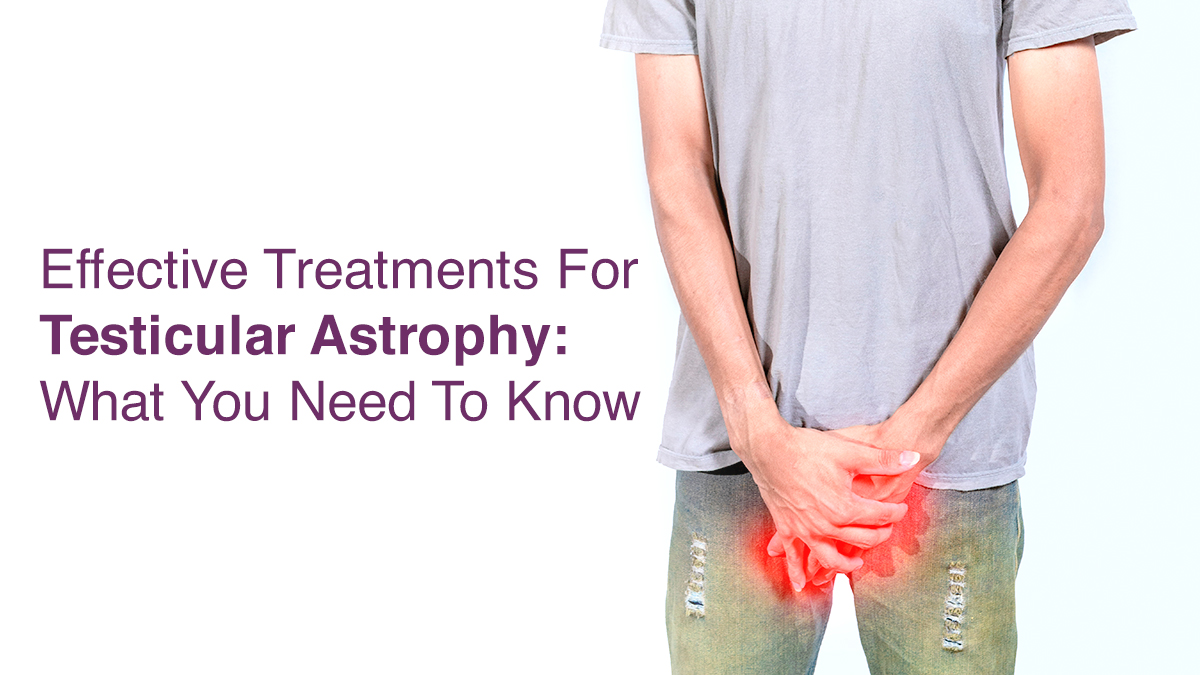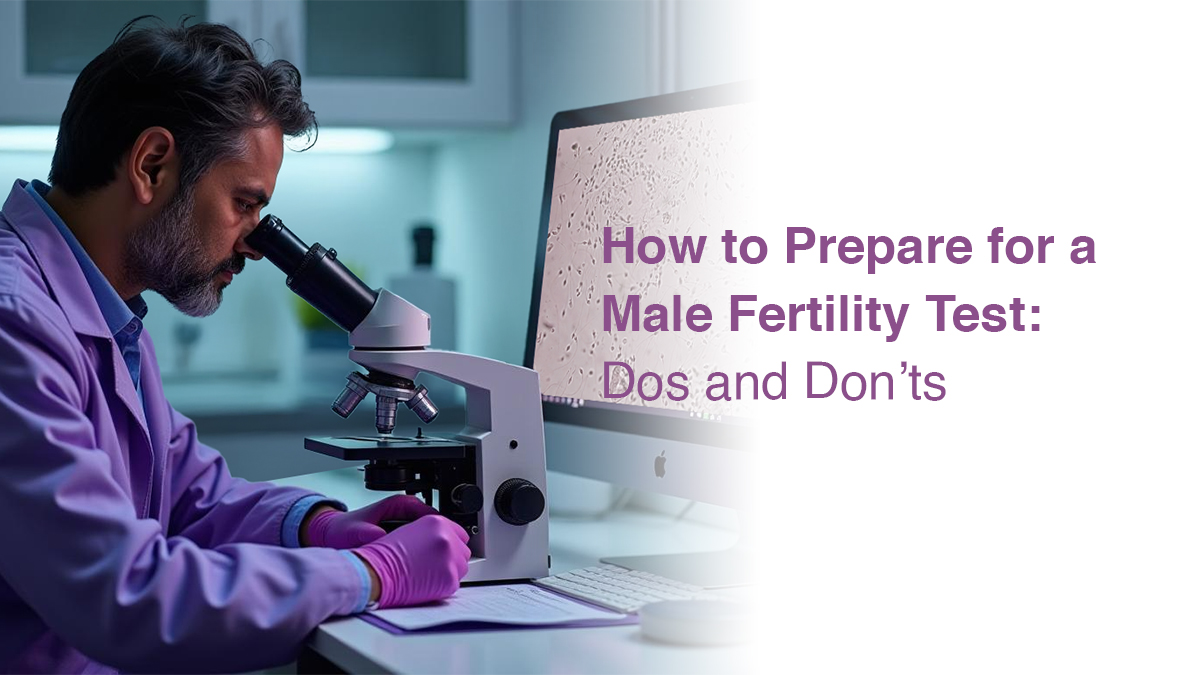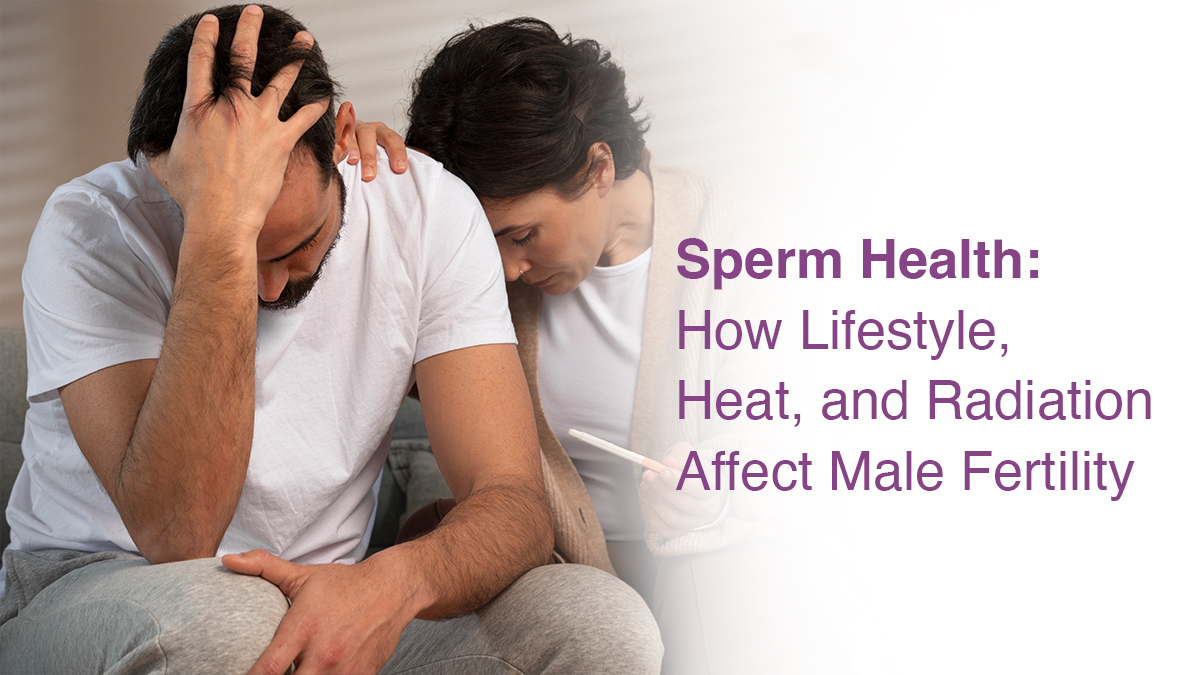
Effective Treatments for Testicular Atrophy: What You Need to Know

Fertility relies on many factors, with sperm production and testicular health being crucial for men. Male fertility depends on the testes since they generate and develop sperm. Toxins, diseases, lifestyle decisions as well as hormone imbalances can alter testicular function, which in turn affects the quantity and quality of sperm. A disorder that can have a major effect on fertility is testicular atrophy, also known as shrinkage, which lowers testosterone levels and sperm production. Testicular atrophy can be brought on by trauma, infections, hormone problems, and specific medical procedures. This highlights how imperative it is to manage variables that could impair fertility and preserve testicular health for successful reproduction.
What is Testicular Atrophy?
The shrinkage of the testes is referred to as testicular atrophy. It occurs when some of the germ cells and Leydig cells are lost, causing the testes to decline. Leydig cells create testosterone, whilst germ cells produce sperm. Since these cells are lost when the testes shrink, a person may have less sperm, less testosterone, or both. Several factors, including drug abuse, hormone abnormalities and sexually transmitted diseases, might contribute to it. It is possible to treat this illness and even reverse it if detected early. However, reversal might not be feasible if the problem is discovered at an advanced stage.
Effective Treatments for Testicular Atrophy
Can testicular atrophy be reversed? If it’s diagnosed and treated early, it may even be reversed. There is no definitive treatment for shrinking testicles. Testicular atrophy treatment options depend on its cause. Here are a few ways to treat this condition:
Hormonal Therapy:
Testicular atrophy is frequently caused by hormonal abnormalities. Restoring testicular function might occasionally be aided by hormone-balancing medications or testosterone replacement therapy (TRT). Depending on the underlying cause, a doctor may recommend gonadotropins or other drugs to increase sperm count and testosterone production.
Treatment of Infections:
If left untreated, testicular infections such as orchitis, which is an inflammation of the testes and is frequently brought on by bacteria or viruses, can result in atrophy. Testicular health can be preserved, inflammation can be decreased, and additional harm can be avoided with prompt administration of antibiotics or antiviral drugs.
Surgical Intervention:
Surgery may be required if atrophy results from physical harm, testicular torsion (twisting of the testicle), or varicocele (enlarged scrotal veins). Testicular untwisting and varicocelectomy are two procedures that can improve testicular function, lessen damage, and restore blood flow.
Lifestyle Changes:
A number of lifestyle choices, including excessive drug and alcohol usage, exposure to environmental pollutants, and alcohol consumption, can lead to testicular shrinkage. Stress reduction, dietary improvements, smoking cessation, and regular exercise can promote testicular health in general and may assist in preventing or reducing shrinkage.
Fertility Treatments:
Are testicular atrophy and fertility connected? In vitro fertilisation (IVF) and intracytoplasmic sperm injection (ICSI) are examples of assisted reproductive technologies (ART) that may be available if testicular atrophy has affected fertility. Despite decreased sperm production, these medicines enable couples to become pregnant by utilising any viable sperm that is available.
A healthcare professional should personalise each treatment strategy corresponding to the patient’s condition and desired fertility goals.
Prognosis and Recovery
The underlying reason, the length of the ailment, and the patient’s general health all affect the prognosis and recovery from testicular atrophy. Since early diagnosis and treatment significantly increase the likelihood of recovery and fertility preservation, they are essential. Recovery may be feasible if atrophy is brought on by curable conditions such as infections, hormone abnormalities, or problems with lifestyle. Testicular function can be permanently lost in situations of atrophy that are severe or persistent, such as those brought on by testicular torsion, serious traumas, or untreated infections.
If hormone imbalance is one of the testicular atrophy causes, recovery can be possible if treatment is timely. Moreover, some men may still generate enough sperm to conceive naturally or with the help of fertility aids, even if testicular shrinkage can affect fertility. For people who produce less sperm, assisted reproductive methods like intracytoplasmic sperm injection (ICSI) or in vitro fertilisation (IVF) may also be useful.
When to Seek Medical Advice
If you observe unexpected changes in the testicles or signs of testicular atrophy, you should see a doctor right away because early management can improve results. Testicular atrophy may develop gradually. Therefore, any obvious changes, like testicular shrinkage or softening, should be assessed. Infections, varicocele, or testicular torsion may be the cause of persistent pain or discomfort in the testicles or groin, which should be treated if it occurs suddenly or is severe.
If left untreated, these conditions can result in atrophy. Consult a healthcare professional if you have symptoms of a hormone imbalance, such as decreased libido, exhaustion, or mood swings, as hormonal therapy may be helpful. Fertility specialists can assist with early identification and management if you have a history of testicular injury or are having trouble becoming pregnant.
Conclusion
Testicular atrophy is a significant factor in male reproductive health. If you observe any testicular atrophy symptoms, then book an appointment with the Oasis Fertility Clinic near you immediately. The fertility specialists from the centre have the necessary tools and expertise to guide you in the correct direction and recommend a treatment plan suitable for you.


fill up the form to get a
Free Consultation
Avail 0% interest on EMI
All Procedures | No Upper Limit
How we reviewed this article:
- Current Version
- March 10, 2025 by Oasis Fertility
- January 7, 2025 by Oasis Fertility






